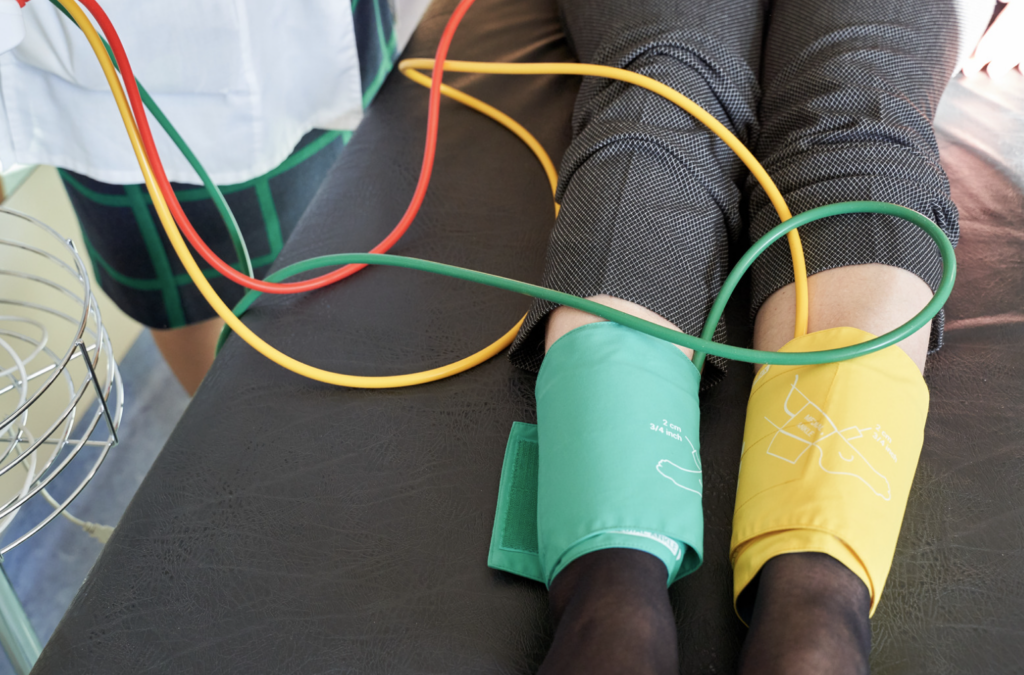
The ankle-brachial index (ABI) is a non-invasive test used to assess the blood flow in the lower limbs, particularly in the arteries of the legs. The test involves measuring the blood pressure in the arms and ankles using a blood pressure cuff and a Doppler ultrasound device.
The test is performed by comparing the blood pressure in the arm to the blood pressure in the ankle. The ankle pressure is divided by the arm pressure to get the ABI value. A normal ABI value is between 0.9 and 1.3, with values lower than 0.9 indicating that there may be narrowing or blockages in the arteries of the legs.
The ABI is commonly used to diagnose peripheral arterial disease (PAD), a condition in which the arteries in the legs become narrowed or blocked, reducing blood flow to the muscles and other tissues in the legs. The test can also be used to monitor the progression of PAD and assess the effectiveness of treatment.